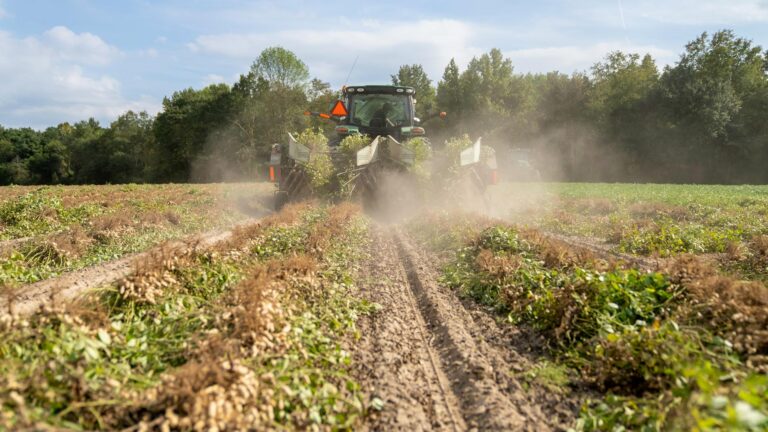The John Deere 750 is a compact utility tractor that has gained legendary status among farmers, landscapers, and hobbyists for its durability, efficiency, and reliability. Though production ceased decades ago, the John Deere 750 remains one of the most sought-after small tractors in the used market.
Whether you’re considering buying a used model or just want to learn more about this powerhouse of a machine, this detailed guide will walk you through everything you need to know—including its overview, engine, transmission, and dimensions.
Overview of the John Deere 750
Introduced in 1981 and manufactured until 1989, the John Deere 750 was part of the company’s 50 Series compact utility tractors. Designed with small-scale farming, gardening, and landscaping in mind, the 750 quickly became known for its simplicity, reliability, and powerful performance in a small package.
Key Features:
- Compact design suitable for small farms and gardens
- 2WD and 4WD variants
- Manual transmission
- Durable 3-cylinder Yanmar diesel engine
- PTO (Power Take-Off) compatible for various implements
- Category I 3-point hitch
The John Deere 750 was produced by Yanmar in Japan under contract with John Deere, which helped reduce manufacturing costs without compromising on quality.
Its simplicity—free of complex electronics or unnecessary features—makes it easy to maintain and repair, which is why it still has a dedicated user base today.
John Deere 750 Engine Specifications
At the heart of the John Deere 750 lies a Yanmar 3T80J 3-cylinder diesel engine. This engine is known for being fuel-efficient, durable, and surprisingly powerful for the tractor’s compact frame.
Engine Specifications:
| Specification | Details |
|---|---|
| Engine Model | Yanmar 3T80J |
| Engine Type | 4-stroke, liquid-cooled diesel |
| Cylinders | 3 |
| Displacement | 1.3 liters (78.1 cu in) |
| Horsepower (Gross) | 20 hp |
| Horsepower (PTO) | ~18 hp |
| Rated RPM | 2400 rpm |
| Fuel Tank Capacity | 6.6 gallons (25 liters) |
| Air Cleaner Type | Dry type |
| Compression Ratio | 18.0:1 |
Engine Highlights:
- Fuel Economy: The small 1.3L engine is highly efficient, using less fuel than larger tractors for similar workloads.
- Ease of Maintenance: With minimal electronics and straightforward parts, the engine is relatively easy for DIY mechanics to service.
- Longevity: With proper maintenance, these engines can easily surpass 5,000 hours of operation.
The John Deere 750’s engine proves that small doesn’t mean weak. Many users report running rotary tillers, finish mowers, and even post-hole diggers with ease.
John Deere 750 Transmission Details
The transmission of the John Deere 750 is another point of reliability. Simple, manual, and rugged, it allows for precise control over a variety of tasks.
Transmission Specifications:
| Specification | Details |
|---|---|
| Transmission Type | Gear-driven, sliding gear |
| Number of Gears | 8 forward / 2 reverse |
| Clutch | Dry-type single-stage clutch |
| Brakes | Differential wet disc brakes |
| Final Drive | Spur gear |
| Differential Lock | Yes (mechanical foot-operated) |
| Power Steering | No (manual steering) |
Transmission Highlights:
- Manual Control: The gear-driven system gives operators more control, which is especially useful for jobs like tilling or plowing.
- Durability: With fewer moving parts and no electronics, the transmission is highly durable.
- Low-Speed Precision: With 8 forward gears, the 750 offers excellent speed control for fieldwork.
While the lack of power steering can be a drawback for some, many users find the steering manageable due to the tractor’s light weight.
John Deere 750 Dimensions and Weight
One of the major selling points of the John Deere 750 is its compact size, making it ideal for small farms, orchards, or residential use. Despite its small stature, it’s heavy enough to maintain good traction and pull weighty implements.
Dimensions and Weight:
| Specification | 2WD Model | 4WD Model |
|---|---|---|
| Overall Length | 109.5 inches | 109.5 inches |
| Overall Width | 53 inches | 53 inches |
| Height (to steering) | 50 inches | 50 inches |
| Wheelbase | 61 inches | 61 inches |
| Ground Clearance | 12 inches | 12 inches |
| Turning Radius | 8.2 ft | 8.2 ft |
| Weight | ~1,600 lbs | ~1,800 lbs |
| Rear Tires | 12.4-16 | 12.4-16 |
| Front Tires | 5.00-12 (2WD) | 6.00-12 (4WD) |
Dimension Highlights:
- Compact Design: Fits easily in tight barns, garages, and narrow garden paths.
- Low Ground Pressure: Great for use on soft or delicate soil without compacting it.
- Balance and Traction: The 4WD version is especially good on slopes and muddy terrain.
The dimensions of the John Deere 750 make it a versatile and user-friendly machine that can go where larger tractors can’t.
More Features and Capabilities
Aside from its engine, transmission, and compact size, the John Deere 750 offers plenty of value with extra features:
PTO and Hitch:
- Rear PTO: 540 RPM standard
- Mid PTO: Optional (some models)
- 3-Point Hitch: Category I
- Lift Capacity: Approx. 815 lbs (370 kg) at 24″ behind lift point
These specs make the John Deere 750 compatible with a wide range of attachments including:
- Rotary tillers
- Box blades
- Rear mowers
- Snow blowers
- Front-end loaders (aftermarket)
Reliability and Longevity
What truly sets the John Deere 750 apart is how many units are still running strong today. These tractors are known to last for decades with minimal issues, provided regular maintenance is performed.
Common replacement parts like oil filters, belts, and hoses are still widely available from John Deere and third-party suppliers.
Who Is the John Deere 750 Best For?
The John Deere 750 is ideal for:
- Small-scale farmers needing a reliable workhorse
- Hobbyists maintaining food plots, orchards, or gardens
- Homeowners managing large properties
- Landscapers seeking a compact yet powerful machine
With its low operating costs and simple design, it’s a fantastic first tractor or backup machine for a larger farm.
Common Issues and Things to Watch Out For
Even the best machines have a few weak points. With the John Deere 750, watch out for:
- Hydraulic leaks from older hoses or seals
- Manual steering wear, especially on older 2WD models
- Rust on the body and undercarriage in wet climates
Still, these are minor issues for a tractor that has stood the test of time.
John Deere 750 Tractor Price and Market Availability
As of 2025, the used price for a John Deere 750 ranges from $4,000 to $9,000, depending on condition, location, and included attachments.
Keep an eye on:
- Local farm auctions
- Craigslist and Facebook Marketplace
- TractorHouse and Machinery Pete
Given their high resale value, it’s best to act quickly if you find a well-maintained model at a fair price.
Conclusion: Is the John Deere 750 Still Worth It?
Absolutely. If you’re looking for a reliable, no-frills compact tractor that’s built to last, the John Deere 750 is hard to beat. Its rugged construction, fuel efficiency, versatile performance, and long-lasting components make it a top choice in the used tractor market.
Whether you’re plowing a small field, mowing your land, or simply looking for a dependable utility tractor, the John Deere 750 delivers where it counts.



